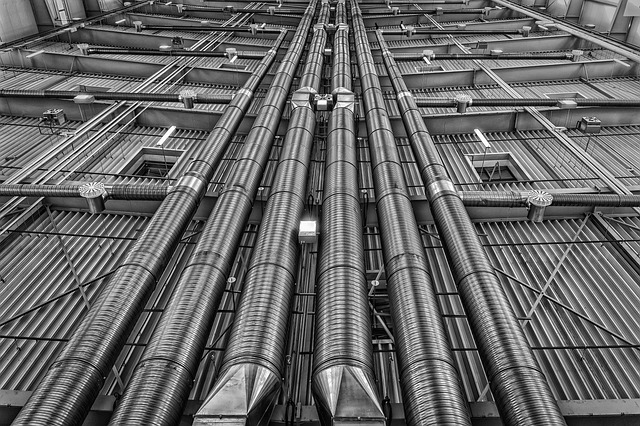Smart unit heaters, integrating with building automation systems, revolutionize heating efficiency and control. Using sensors and connectivity, these heaters adjust output based on occupancy and environmental factors, optimizing energy use in warehouses, industrial areas, and commercial spaces. Ceiling-mounted designs offer uniform heat distribution, while adjustable BTU capacities provide precise temperature control, enhancing comfort and reducing energy consumption.
In today’s quest for energy-efficient buildings, smart unit heaters are emerging as game-changers. These advanced heating solutions integrate seamlessly with building automation systems, offering both comfort and cost savings. This article delves into the technology and benefits of smart unit heaters, explores the technical intricacies of integration with automation, and highlights their impact on efficient heating and energy conservation. By understanding these innovations, facilities managers can harness the potential of smart unit heaters to optimize heating systems.
- Understanding Smart Unit Heaters: Technology and Benefits
- Integrating with Building Automation: The Technical Aspects
- Efficient Heating Solutions: Impact on Energy Conservation
Understanding Smart Unit Heaters: Technology and Benefits

Smart unit heaters represent a significant evolution in heating technology, integrating advanced features with building automation systems to offer unparalleled efficiency and control. These heaters, which include gas fired units, electric heaters, and even suspended heaters, leverage smart sensors and connectivity to adjust heating output based on real-time occupancy and environmental conditions. This not only optimizes energy usage but also enhances comfort levels in both residential and commercial settings.
With a focus on forced air heating, smart unit heaters can be seamlessly integrated into various spaces, including warehouses and industrial areas, where robust heating systems are essential. Their ceiling mounted design ensures uniform distribution of heat across large, open industrial spaces, while their adjustable BTU capacity allows for precise temperature control. This versatility makes them ideal for a range of applications, catering to both standard and demanding commercial heating requirements.
Integrating with Building Automation: The Technical Aspects

The integration of smart unit heaters with building automation systems is a technological marvel that optimizes energy efficiency and comfort in various settings, from commercial spaces to industrial warehouses. This process involves intricate technical aspects, ensuring seamless communication between the heating units and the central control system. Advanced protocols and APIs facilitate data exchange, allowing real-time monitoring and control of these suspended heaters, such as gas fired units or electric heaters.
Building automation systems can adjust BTU capacity based on occupancy and environmental conditions, making forced air heating more precise. For instance, ceiling-mounted unit heaters in industrial spaces can be dynamically managed to meet the specific needs of different processes. This level of control not only enhances operational efficiency but also reduces energy consumption, making it ideal for warehouse applications and commercial heating requirements alike.
Efficient Heating Solutions: Impact on Energy Conservation

In the quest for efficient and sustainable energy solutions, smart unit heaters play a pivotal role when integrated with building automation systems. These advanced heating devices offer more than just warmth; they are designed to optimize energy consumption in both residential and commercial settings, including industrial spaces like warehouses. By leveraging technology, these heaters can adapt to real-time occupancy and environmental conditions, ensuring that heating is delivered only where and when it’s needed.
The impact on energy conservation is significant. Unlike traditional forced air heating systems, smart unit heaters with their ceiling-mounted design and varied BTU capacities allow for precise temperature control, reducing energy wastage. Whether it’s electric heaters, gas fired units, or suspended heaters, each can be programmed to respond swiftly to changes in occupancy and weather conditions, making them ideal for a wide range of applications from residential homes to large commercial buildings. This adaptability not only minimizes utility bills but also contributes to a greener environment, reflecting the growing global commitment to sustainability.
Smart unit heaters that integrate with building automation systems represent a significant advancement in efficient heating solutions. By leveraging technology and data, these systems optimize energy usage, reduce costs, and enhance indoor comfort. The technical aspects of integration ensure seamless control and monitoring, making them essential components for modern, eco-conscious buildings. This approach not only conserves energy but also contributes to a more sustainable future, as demonstrated by the growing adoption of smart heating technologies worldwide.
